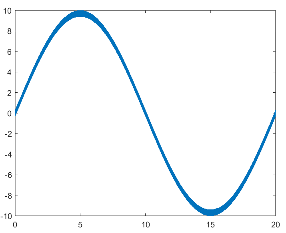read
Read data acquired by hardware
Syntax
Description
scanData = read(d,span)DataAcquisition object
d. You can specify span as a duration, number of
scans, or "all".
[
reads acquired scans, and returns the scan data as a timetable and the scan trigger time as
a datetime.scanData,triggerTime] = read(___)
[
reads acquired scans, and returns the scan data, timestamps, and trigger time as a matrix.
The function returns timestamps as the second output argument only if the
scanData,timeStamp,triggerTime] = read(___,OutputFormat="Matrix")OutputFormat is Matrix.
Note
Foreground Acquisition (Synchronous read) : Call the
readfunction to initiate foreground data acquisition. This action blocks the MATLAB in the foreground and acquires data.Background Acquisition (Asynchronous read) : Call the
startfunction prior to thereadfunction to initiate background data acquisition. Thestartfunction triggers the acquisition in the background and fills an internal buffer asynchronously. Thereadfunction, which you invoke later, acquires the specified range of data from this internal buffer. You can read any data remaining in the internal buffer even if you stop the acquisition.
Examples
Input Arguments
Output Arguments
Version History
Introduced in R2020a
